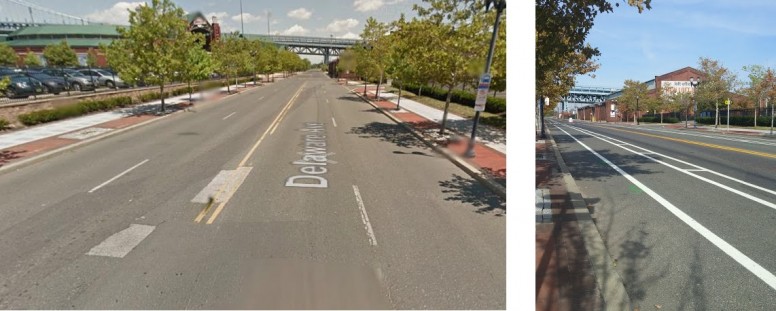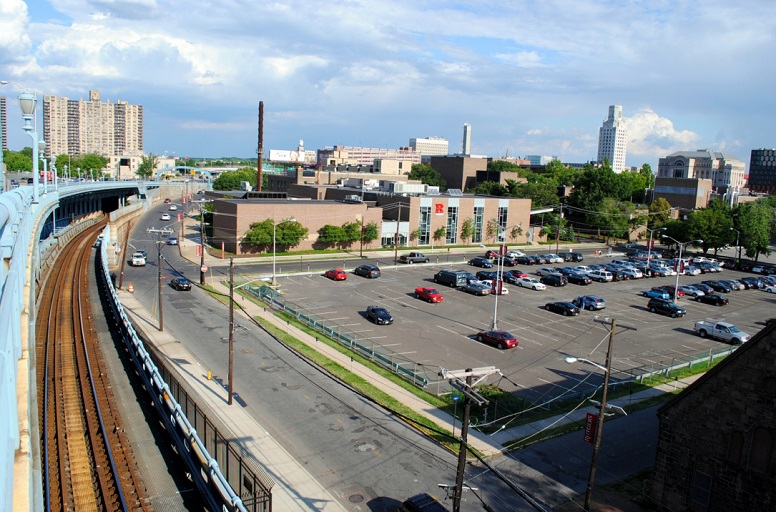The City of Camden, New Jersey has experienced unprecedented investment in recent years, including a $1 billion mixed-use waterfront development and the new Subaru of America headquarters. Between the projected influx of workers and residents — and the fact that 35 percent of households don’t have access to a motor vehicle — the city cannot afford to neglect investments in pedestrian, bicycling and transit amenities.
Camden has already made great strides, including a 4.3-mile on-road bike network crossing through downtown Camden which was completed in September. The network links to the Camden Greenway which runs along the city’s waterfront and the regional Circuit trails system.
The new bike lanes, which connect Delaware Avenue to North Camden and Cramer Hill, are the first buffered lanes in the city. Building bike infrastructure encourages more biking, which in turn leads to a variety of benefits ranging from increased business revenues and real estate values to improved public health and safety to job creation. Pedestrian features were also installed, including high-visibility and ADA-compliant crosswalks and pedestrian-scale lighting.

Local government should not forgo the opportunity to collaborate with the new employees, businesses and developments coming to Camden. The city needn’t look any farther than Newark to see how private companies can positively influence their employees’ commuting habits. When Panasonic relocated from Secaucus to Newark in 2013, the company began offering transit commuter benefits and charging market rates for parking. Since then, solo car commuting among employees fell from 88 percent to 36 percent, while transit ridership rose from 4 percent to 57 percent.
New workers (and current residents) in Camden could benefit from similar initiatives in addition to improved bicycle and pedestrian infrastructure. Connecting bike and pedestrian amenities with existing PATCO and RiverLINE stations, as well as the area’s many bus lines, would help commuters to safely complete the last leg of their journeys. By emphasizing bicycle and pedestrian infrastructure and transit connections, Camden won’t just improve accessibility and mobility for its car-free population, new workers and future visitors — it will also strengthen the case for continued investment sustainable development over car-oriented sprawl.


[…] Camden Must Do More to Safely Connect People with the City’s Growing Opportunities Blog.tstc.org – November 5th […]